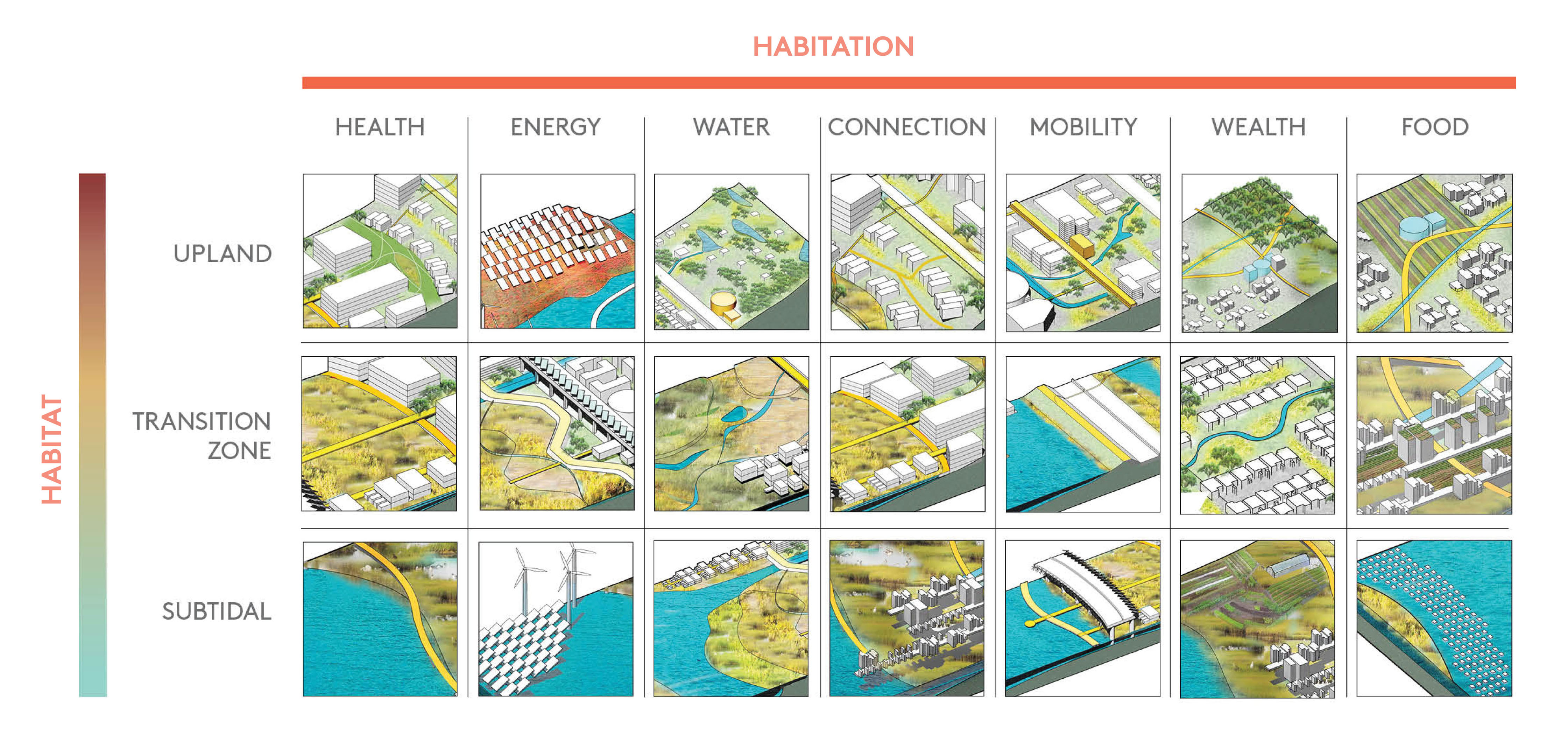It's a sad fact that natural disasters can strike with little warning, leaving families without homes and losing everything in their wake. While it's impossible to be completely prepared for such an event, there are nevertheless steps you can take when designing or renovating your property to make it more resilient to the impacts of storms, typhoons or cyclones. This article looks at the steps you should take when designing or constructing typhoon-proof house designs.Typhoon-Proof House Designs: How to Strengthen Your Home Against Natural Disasters
The goal of typhoon-resistant home design is to provide your home with extra protection against extreme winds and storms, not just for your own sake but also to minimize damage to your property and any neighboring properties. When designing your typhoon-proof home, consider features such as adding sturdier materials, using hurricane clips and straps to hold items down, and installing shatter-proof windows for added safety.Typhoon-Resistant House Design Features to Keep You Safe
Tornadoes can bring powerful winds and potential destruction to your home, but there are ways to make it more tornado-resistant. Reinforce your roof with double-layer covings, use hurricane-resistant construction techniques such as overlapping joints, and don’t forget to add shutters and hurricane film to your windows to protect against flying debris.Tornado-Proof House Design Tips
Modern homes are able to withstand excess winds and storms thanks to structural components like joist hangers, hurricanes straps, and other modern materials. You can even opt for construction materials that are designed to resist fires and quakes if you’re in an area prone to these catastrophes. When it comes to building resilient designs, it’s important to consider the pros and cons of each material before making your decision.Making Your Home Resilient to Natural Disasters Using Design Techniques
The best way to make your home resilient to natural catastrophes is to pick the right materials. You want to opt for strong and research materials that have a proven track record, such as wood, steel, and reinforced concrete. Make sure to consider local building codes before opting for one material over another, as the regulations can vary depending on your area.How to Select the Best Materials for a Typhoon-Proof House Design
Once you’ve implemented the best typhoon-proof design, the next step is to ensure it’s regularly maintained. Inspect your home regularly, paying special attention to your foundations and roof. Replace rotten or damaged materials, and ensure that any vegetation or trees near your house are kept in check to avoid any potential damage.Maintaining Your Typhoon-Resistant House Design
Flood-proof house design includes measures like elevating the foundations of the house, adding flood vents, and sealing the basement and other lower parts of the home. Consider adding barriers around the house to divert floodwaters, and opt for waterproof and durable materials such as cinder blocks and treated wood.Flood-Proof Building Techniques for Your Home
Australia is prone to bushfires, and they can cause devastating damage. Fireproofing your home should be a key element of your house design. Make sure to pick quality building materials and coat the exterior of the house with a fire retardant. You should also consider installing double-paned windows and shutters, as well as well-maintained and regularly inspected fire alarms and alert systems.Australian Bushfires: Constructing Fire-Resistant Home Designs
Building a home that’s resistant to earthquakes requires careful planning and the right materials. You should opt for a flexible foundation, use steel and concrete for the walls and local-certified bolts, and install a seismic dampener system. All of these elements together should ensure that your house can withstand most seismic activity.Earthquake-Resistant Home Design Techniques
In addition to typhoon proofing your home, it’s important to also consider the environment's health in the process. You should opt for eco-friendly building materials that are both durable and sustainable, such as bamboo and other natural building materials. You can also invest in green energy solutions like solar panels to reduce your power consumption and dependency on fossil fuels.Typhoon-Resistant Home Design: Green Solutions for the Environment
Hailstorms can bring extensive damage and devastation to your home. To make your home hail-resistant, opt for thick walls and foundation, install shatter-proof windows or hurricane film, and wrap the exterior of the house with metal roofing or brick protective barriers. Additionally, you should trim any vegetation around the house, as trees and shrubs can provide extra insulation against any impact.Destructive Hail: Constructing a Hail-Proof House Design
Strengthening Materials and Techniques Used for Typhoon Resistant House Design
 In typhoon prone areas, opting for typhoon-resistant house designs is becoming a popular trend. Typhoon-resistant materials and techniques used in building construction can make a huge difference in weathering a storm.
Many times it is used as a preventive measure to ensure that properties are kept safe from typhoon damage. Building materials and techniques used for such designs keep the structure of the house robust and make it resistant to such natural forces.
Building materials
, formwork, as well as techniques used in construction significantly impact the strength and stability of a structure.
In typhoon prone areas, opting for typhoon-resistant house designs is becoming a popular trend. Typhoon-resistant materials and techniques used in building construction can make a huge difference in weathering a storm.
Many times it is used as a preventive measure to ensure that properties are kept safe from typhoon damage. Building materials and techniques used for such designs keep the structure of the house robust and make it resistant to such natural forces.
Building materials
, formwork, as well as techniques used in construction significantly impact the strength and stability of a structure.
Using Steel for Strengthening Structures
 One of the best ways to ensure that a house is resilient during a typhoon is to use additional steel structures in framing. Steel provides extra strength for the overall frame and the walls. Steel frames lock the foundation of a building in place, resisting the shifting of soils which can occur during powerful storms. Furthermore, steel reinforcements not only make a structure stronger but also help in mitigating the effects of incoming waves.
One of the best ways to ensure that a house is resilient during a typhoon is to use additional steel structures in framing. Steel provides extra strength for the overall frame and the walls. Steel frames lock the foundation of a building in place, resisting the shifting of soils which can occur during powerful storms. Furthermore, steel reinforcements not only make a structure stronger but also help in mitigating the effects of incoming waves.
Cementitious Based Materials
 Another important material used in building typhoon-proof structures is cementitious material. Cement based products such as cement plaster, high tensile strength mortar, and cement rendersor offer excellent protection against storms. In many cases, multi-layered cementitious reinforced plaster system with base plate filling can also be used to provide an extra layer of coating on walls, roof, and edges of the building.
Another important material used in building typhoon-proof structures is cementitious material. Cement based products such as cement plaster, high tensile strength mortar, and cement rendersor offer excellent protection against storms. In many cases, multi-layered cementitious reinforced plaster system with base plate filling can also be used to provide an extra layer of coating on walls, roof, and edges of the building.
Reinforced Brick Walls
 Reinforced brick walls form another option for typhoon-resistant houses. The walls are composed of a porous brick layer with mortar coating for superb waterproofing and rigidity. The walls are further strengthened by framing or external steel bars that are bolted in place. This ensures that walls can endure blast pressure, wind forces, and other hurricanes-based forces.
Reinforced brick walls form another option for typhoon-resistant houses. The walls are composed of a porous brick layer with mortar coating for superb waterproofing and rigidity. The walls are further strengthened by framing or external steel bars that are bolted in place. This ensures that walls can endure blast pressure, wind forces, and other hurricanes-based forces.
Smart House Automation System
 Today's smart home technology is the need-of-the-hour for any house today, let alone a typhoon-resistant one. Smart home systems can automatically control or shut down power connections, shutters, and more in case of an emergency like a typhoon. This helps the property remain safe and protected from any damage.
In a nutshell, typhoon-resistant house designs employ a combination of materials and techniques to create a robust and resilient structure. All the measures used in building such structures ultimately help to protect the property from the menace of a typhoon.
Today's smart home technology is the need-of-the-hour for any house today, let alone a typhoon-resistant one. Smart home systems can automatically control or shut down power connections, shutters, and more in case of an emergency like a typhoon. This helps the property remain safe and protected from any damage.
In a nutshell, typhoon-resistant house designs employ a combination of materials and techniques to create a robust and resilient structure. All the measures used in building such structures ultimately help to protect the property from the menace of a typhoon.
HTML Version

Strengthening Materials and Techniques Used for Typhoon Resistant House Design
 In typhoon prone areas, opting for typhoon-resistant house designs is becoming a popular trend. Typhoon-resistant
materials
and techniques used in building construction can make a huge difference in weathering a storm.
Many times it is used as a preventive measure to ensure that properties are kept safe from typhoon damage. Building
materials
, formwork, as well as techniques used in construction significantly impact the strength and stability of a structure.
In typhoon prone areas, opting for typhoon-resistant house designs is becoming a popular trend. Typhoon-resistant
materials
and techniques used in building construction can make a huge difference in weathering a storm.
Many times it is used as a preventive measure to ensure that properties are kept safe from typhoon damage. Building
materials
, formwork, as well as techniques used in construction significantly impact the strength and stability of a structure.
Using Steel for Strengthening Structures
 One of the best ways to ensure that a house is resilient during a typhoon is to use additional
steel
structures in framing. Steel provides extra strength for the overall frame and the walls. Steel frames lock the foundation of a building in place, resisting the shifting of soils which can occur during powerful storms. Furthermore, steel reinforcements not only make a structure stronger but also help in mitigating the effects of incoming waves.
One of the best ways to ensure that a house is resilient during a typhoon is to use additional
steel
structures in framing. Steel provides extra strength for the overall frame and the walls. Steel frames lock the foundation of a building in place, resisting the shifting of soils which can occur during powerful storms. Furthermore, steel reinforcements not only make a structure stronger but also help in mitigating the effects of incoming waves.
Cementitious Based Materials
 Another important material used in building typhoon-proof structures is cementitious material. Cement based products such as cement plaster, high tensile strength mortar, and cement rendersor offer excellent protection against storms. In many cases, multi-layered cementitious
reinforced
plaster system with base plate filling can also be used to provide an extra layer of coating on walls, roof, and edges of the building.
Another important material used in building typhoon-proof structures is cementitious material. Cement based products such as cement plaster, high tensile strength mortar, and cement rendersor offer excellent protection against storms. In many cases, multi-layered cementitious
reinforced
plaster system with base plate filling can also be used to provide an extra layer of coating on walls, roof, and edges of the building.
Reinforced Brick Walls
 Reinforced brick walls form another option for typhoon-resistant houses. The walls are composed of a porous brick layer with mortar coating for superb waterproofing and rigidity. The walls are further strengthened by framing or external
steel
bars that are bolted in place. This ensures that walls can endure blast pressure, wind forces, and other
Reinforced brick walls form another option for typhoon-resistant houses. The walls are composed of a porous brick layer with mortar coating for superb waterproofing and rigidity. The walls are further strengthened by framing or external
steel
bars that are bolted in place. This ensures that walls can endure blast pressure, wind forces, and other






















































































































